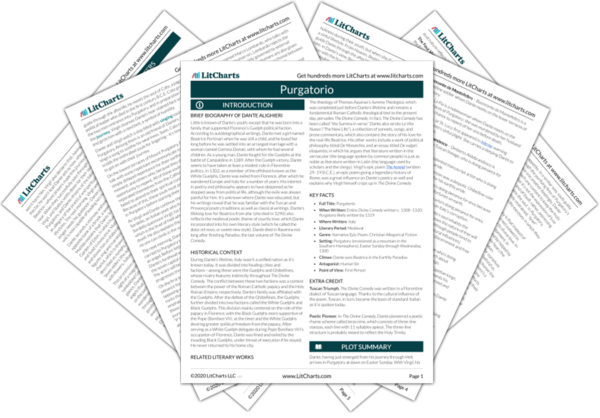Next
Summary
Purgatorio Study Guide |
Next
Summary
|
Welcome to the LitCharts study guide on Dante Alighieri's Purgatorio. Created by the original team behind SparkNotes, LitCharts are the world's best literature guides.

Tuscan Triumph. The Divine Comedy was written in a Florentine dialect of Tuscan language. Thanks to the cultural influence of the poem, Tuscan, in turn, became the basis of standard Italian as it is spoken today.
Poetic Pioneer. In The Divine Comedy, Dante pioneered a poetic rhyme scheme called terza rima, which consists of three-line stanzas, each line with 11 syllables apiece. The three-line structure is probably meant to reflect the Holy Trinity.